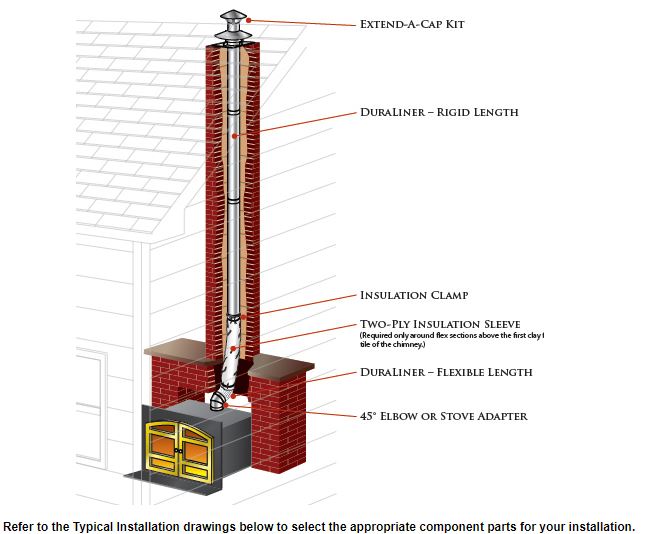The insulation will enable the flue to heat up more quickly and this increases your draft reduces creosote making it easier to clean and makes your system more efficient safer.
Do i need to insulate my chimney liner.
The insulation for the chimney liner will minimize creosote buildup and assist in keeping the chimney liner cleaner.
Chimney liners are a protective barrier usually made of metal or ceramic.
Free uk wide delivery when you spend over 150.
Read now this website uses cookies to ensure you get the best experience.
Otherwise it is not necessary especially if the majority of the chimney is internal within the building.
There is no building regulation that says you must insulate around a flexible flue liner within a chimney stack.
This is used to insulate around a chimney liner where there is not enough room to fit rockwool insulation and where you do not want to use chimwrap type products.
Having 1 2 thick insulation will maintain your liner to the ul1777 standard.
It is recommended that when a chimney liner is being installed it should be insulated.
In this guide we look at how necessary chimney liner insulation is and the best ways to do it.
Masonry chimney flues are not insulated unless an insulated liner has been installed.
Chimney liners do not always need to be insulated there are different types of chimney liners which you can use to line your chimney.
Stone or brick chimneys can be made safer with a flue lining that helps to move heat and gases up and out of your home.
The air between the liner and the chimney wall will insulate the liner air is a good insulator although the liner obviously touches a cold wall in many places.
It is always a good idea to insulate your flexible chimney liner.
We re still open for business and dispatching daily.
However building regulations do state that gases must be safely taken away from the building and by insulating your flexible flue liner within the chimney cavity will ensure that the gases will travel directly up from the stove and out through the chimney top.
To be able to use this method a register plate must be used to block the chimney from the bottom.
An alternative option is to use backfill insulation for chimney flue liners.
When you are converting your wood burning fireplace to a gas burning fireplace and using the existing chimney as a vent it is a good idea to install a flexible aluminum liner.
One that has been insulated will achieve the ul listing of 1777 standard.
Ul listed chimney liners.
Liners insulate heat moving through the chimney protecting flammable areas of your home s structure.





























